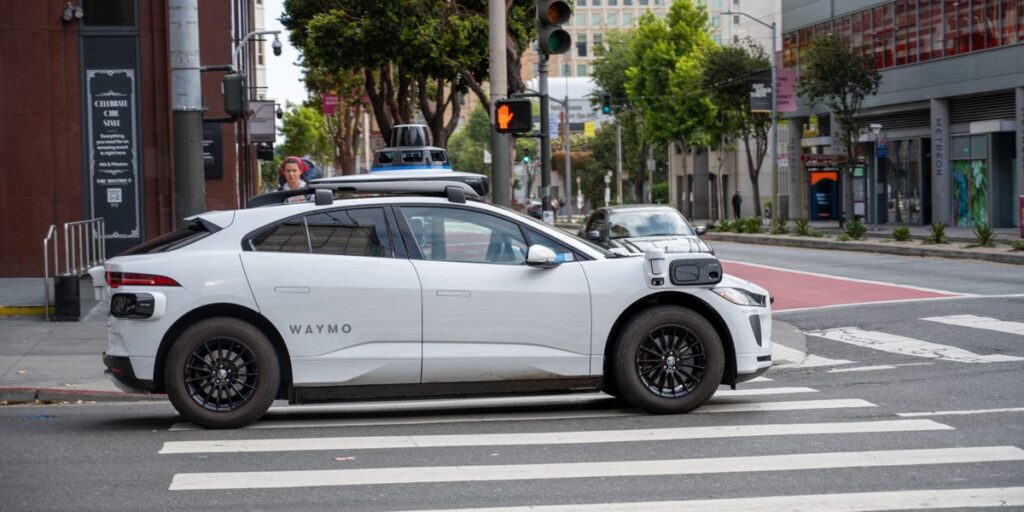Waymo will soon have its robotaxis on the road operated by rivals Lyft and Uber as part of Alphabet company’s strategy to bring more self-driving cars to the masses.
Waymo said Wednesday it will initially provide rides in Nashville through its proprietary app. As the service expands, riders will be able to match with a fully autonomous Waymo on the Lyft app.
In its announcement, Waymo said Lyft will oversee vehicle maintenance and depot operations through the ride-hailing company’s subsidiary Flexdrive. Flexdrive is a rental-car and fleet management company acquired by Lyft in 2020.
Lyft’s share price was up 20% in premarket trading following the announcement.
A spokesperson for Waymo did not say how many robotaxis would be deployed for the Nashville launch. The company currently has around 2,000 robotaxis on the roads in multiple US cities.
Waymo will scale the Nashville fleet to “hundreds of vehicles,” the spokesperson said, but didn’t give a specific timeline.
The move comes eight years after Waymo first partnered with the Uber rival in 2017.
In 2019, Waymo conducted a pilot program in Phoenix, deploying about 10 robotaxis on the Lyft platform.
“This was a great building block for the multi-year, strategic partnership we’ve now launched with Lyft in Nashville, where Waymo’s marketplace and operations software will dispatch our AVs for requested rides on the Waymo app, and as we expand together, matched rides on the Lyft app,” a Waymo spokesperson told Business Insider of the pilot program.
Waymo’s partnership strategy
Waymo has a similar relationship with Uber in Austin, where the ride-hailing company manages about 100 Waymo robotaxis. Unlike the Nashville launch, Austin riders cannot hail a robotaxi through Waymo’s app.
Waymo’s decision to launch robotaxis through Uber and Lyft provides a look at how the company wants to bring self-driving cars to the masses, leveraging an existing rider base that competing companies have built for more than a decade.
Gil Luria, a tech analyst for D.A. Davidson, told Business Insider that the “self-driving arena” has three parts: making a car, making a driver or the software, and then connecting the driver to passengers.
“Waymo is ahead of the curve, arguably by far, in terms of having the best driver,” Luria said. “So it’s their incentive to get that driver deployed as broadly as possible, and that includes trying to do that through existing service providers.”
By working with Uber and Lyft, Waymo also doesn’t become too beholden to one provider, Luria said, adding that the main risk for Waymo is that it “surrenders control over the consumer relationship.”
Uber and Lyft have also sought their own deals to bring autonomous cars to their platforms without Waymo.
This month, Lyft launched a limited robotaxi service with May Mobility, a Michigan-based startup. The service uses a fleet of Toyota Sienna minivans and in-car safety operators.
Meanwhile, Uber also announced this month a $300 million investment in Lucid, the EV automaker, to bring robotaxis to its platform.
“Uber aims to deploy 20,000 or more Lucid vehicles through the program over six years,” Lucid said in a press release.
Spokespeople for Uber and Lyft did not immediately respond to a request for comment.
Read the full article here


